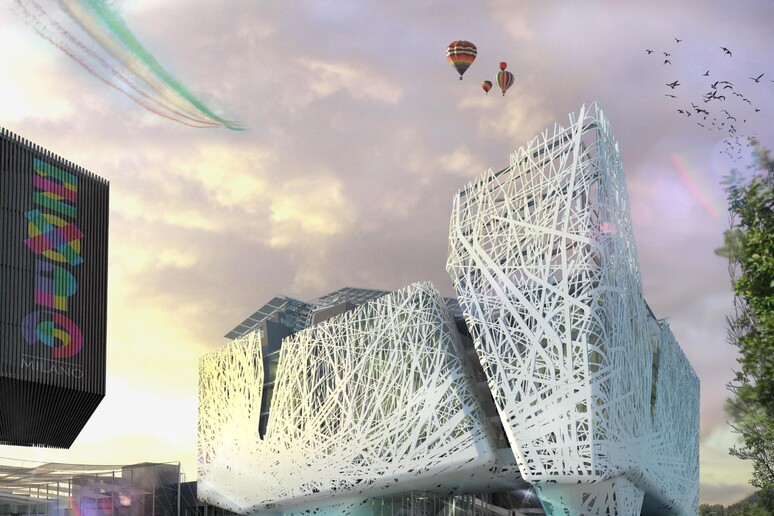An exhibition at Milan State University illustrates the genesis of the Italy Pavilion at Expo 2015, the world's fair opening May 1 and continuing for six months.
The show organized by Italcementi and Nemesi & Partners architectural studio covers the birth and rise of Palazzo Italia, the iconic structure at the heart of the Italy Pavilion.
From the drawing boards to the final phases of construction, the exhibition covers 15 months in nine project drawings, 21 photographs,a documentary film and four biodynamic cement panels. It tells the story of the making of a "Concrete Utopia" as designed by Michele Molé and Susanna Tradati from Nemesi & Partners.
The pavilion's architectural design envisages the construction of a complex structure whose exterior and some interior spaces recall the shapes of branches in a thick forest.
The entire outdoor surface and part of the interiors consist of i.active Biodynamic cement panels, obtained from new material developed at i.lab, which is the heart of Italcementi's research and innovation department.
The Italy Pavilion is made up of the 35-meter high Palazzo Italia - the only permanent building on the site - and the buildings along the Cardo, which is a street crossing the site from north to south.
The Palazzo's external, 9,000-square-meter surface is built out of more than 750 panels in Italcementi's biodynamic cement, the brainchild of 15 researchers and 12,500 hours of work, experimentation, and scale tests carried out in conjunction with the architects.
The cement - which is covered by five worldwide patents - captures pollutants present in the air and turns them into inert salts. It is 80% made up of recycled aggregates, making it shinier than traditional white cement. It is also far more fluid, and this is what allows builders to pour, stretch, and bend it to achieve complex shapes such as those of Palazzo Italia.
ALL RIGHTS RESERVED © Copyright ANSA











